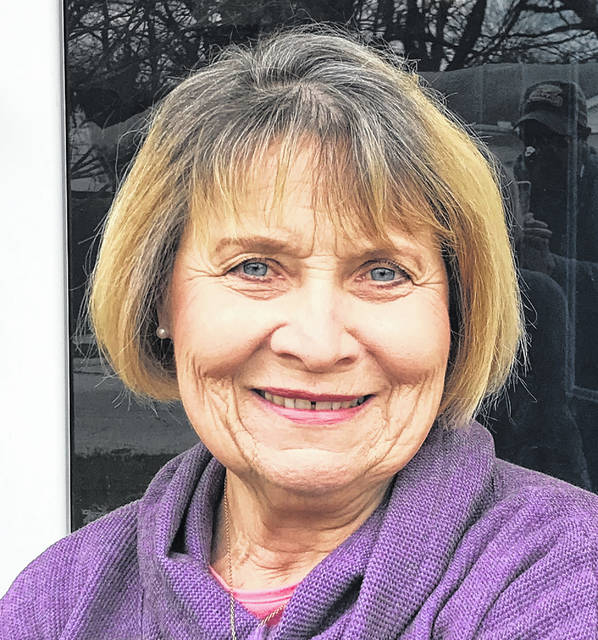
I made a spur of the moment visit to the labyrinth on the grounds of Ohio Wesleyan University during the hectic week before Christmas. It’s as if the wheels of my car turned for me into the vacant parking lot on Henry Street. The university was not in session, so there was no need for a parking permit.
I walked my dog on the sidewalk past the large historical marker that states the grassy area was the site of the first Ohio State football game in 1890. The labyrinth lies beyond, midway between Henry and Sandusky streets along the Delaware Run. Three benches border the 11-circuit labyrinth modeled after the one embedded in the floor of Chartres Cathedral in France.
The path begins where there is no bench on the east rim of the medieval spiritual tool. As I entered the walkway, I immediately felt a little more relaxed. My breathing became calmer and the tension from running Christmas errands drained from my body as I focused on my feet and the path. Dropping the leash, I expected my dog to scamper off, but each time I checked for him he was either sitting on another area of the pattern watching me or nose to the pavers following the paths of the little creatures who must routinely traverse this little gem of mysterious geometry surrounded by magnificent trees.
A plaque attached to a large rock welcomes all to this labyrinth, which was dedicated in 2015 and connected with the international labyrinth project known as Veriditas. I first met Veriditas founder Lauren Artress when she gave a lecture explaining how she had walked the pattern in Chartres Cathedral and felt a calling to research and study its power in helping people open to new understandings and possibilities within themselves. A trained psychotherapist, the Rev. Dr. Artress was then canon of Grace Cathedral in San Francisco and with support of the congregation, the church installed the pattern in the carpet of their sanctuary.
I visited Grace Cathedral and walked the labyrinth many times in the 1990s, often with friends who had come to visit me when I lived in San Francisco. In those days, the newly installed meditative tool drew long lines of spiritual seekers that formed early on weekday mornings and extended through evening hours to include people who had finished their work day. Social distancing was not a term as commonly used then as now, but perhaps I should say we observed “spiritual distancing” as we waited in silence to walk the beautiful pattern embedded in the floor at the back of the magnificent, dimly lit sanctuary. There was soft music playing, and the contemplative atmosphere allowed each person to begin their walk assured that others would wait until they had a reasonable start on the path. Written instructions encouraged silence and gently stepping around people if they were standing or sitting prayerfully on the path. A consistent forward movement was suggested to honor those waiting to enter the sacred path.
The point should be made that this is not a maze. There are no dead ends. Nor is it a race, but a walk made with intention designed to slow one down in order to open to new awarenesses. The labyrinth is an ancient tool, a trust walk of sorts, that leads one in a circuitous path from the rim, eventually ending in the center, which is outlined with six lobes to provide a space where one may reflect and pray for guidance to be led forward into life’s uncertainty. The return path of the labyrinth is similar and leads one out near where the beginning was made.
I understand whole classes of students at the university have walked the labyrinth. Families walk together to encourage contemplation. My hope is that like me, others in the community will take time to surrender to this simple path in order to find peace and serenity.


